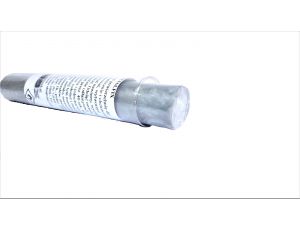Epoxy adhesives
Epoxy adhesives properties, advantages and disadvantages. The advantages are often the low cost of the glue, ease of use and a very wide range of applications depending on the version. The minuses are, unfortunately, a rigid connection and additional surface preparation - mainly physical roughening of the material. What do we use epoxy for - and where better not to use? They are widely used in bonding metals, wood, ceramics, glass, and even concrete and composites. We do not use flexible surfaces like rubber (only a special version is designed for this) and, of which most people are not aware - plastic. Many of them are not adapted to gluing plastic, which will "work" - after gluing the product will "churn". Versions of epoxy adhesives and their purpose? Liquid high temperature metals - Kemiskit fe21 / al21 / med21 - mainly for repairing cracks in metals, restoring and "casting" metal parts and aligning - positioning. Two-component epoxy universal adhesives - KEMISPOX N and N11 - basic versions for metals, plastic, glass, stone and ceramics. Epoxy adhesives for metals - ATK EP 61 Epoxy adhesives for plastics - ATK EP 351 Types: The general division is one-component and two-component epoxies. There is a vast majority of the latter on the market, because additional treatments are needed for one-component adhesive to cure such an adhesive - either by heating it or applying UV light. An additional division is the base of hardeners, e.g. amine, amide and polyamide. Transparent and black epoxy adhesives - what's the difference? In practically all adhesives, perfectly transparent versions without e.g. a yellow tinge are always weaker than versions with a natural color or black. This is due to the fact that some of the ingredients cannot be replaced with colorless equivalents - hence it should be taken into account. Is epoxy the same as glue? Is not. The purpose of the glue is to stick to the glued surface as well as possible, often with fillers to increase the strength of thicker gaps. We use resins mainly for pouring surfaces. They are supposed to be strong cohesive in themselves, and the surface has a secondary purpose. Can epoxy be flexible? Not in the way we often think. When it comes to softness like rubber, basically not, with some exceptions (adhesives based on epoxy resins with elastomer additives). There are of course the so-called flexible resins up to 30-40%, but we are talking about expansion and flexibility to bending. Simply put, it is not the flexibility that will allow a simple element to be bent over and over when glued, but will prevent the adhesive from breaking if the few percent bend from the plane. Types: The general classification is one-component and two-component epoxies. In fact, the vast majority of the latter, because for one component, additional steps are needed to harden such an adhesive either by heating or with UV light. An additional division is the base of hardeners, e.g. amine, amide and polyamide.












